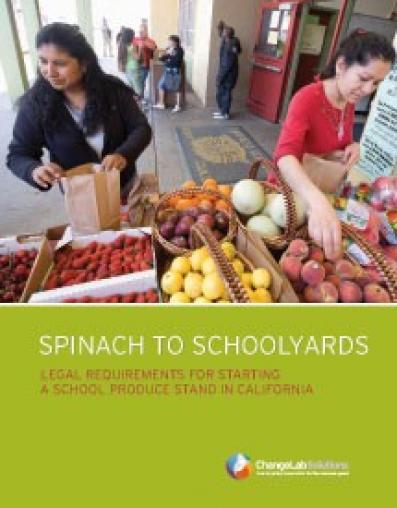Spinach to Schoolyards
Legal requirements for starting a school produce stand in California
More than one million Californians live in communities with limited access to grocery stores selling fresh produce – but most live near at least one neighborhood school.
Advocates and others have come up with a creative solution to this problem of poor food access: produce stands at schools.
School produce stands, typically run by volunteers or a community-based organization, purchase produce to resell to their surrounding communities. They benefit communities in many ways: they supply farm-fresh produce at affordable prices; they are a convenient way for families to squeeze food shopping into their daily routine of dropping off and picking up their kids from school; and they can support local growers.
California laws regulating the sale of fresh produce are confusing to begin with, and school produce stands do not fit neatly into the existing legal categories of food retailers. That’s why advocates who ask local agencies how to start a new stand may receive confusing or contradictory information about what permits or licenses are needed and what other operational standards apply. This complicated regulatory framework can halt a promising project in its tracks.
This fact sheet outlines the basic legal requirements for starting a school produce stand in California, including licensing, permitting, and food safety requirements.


